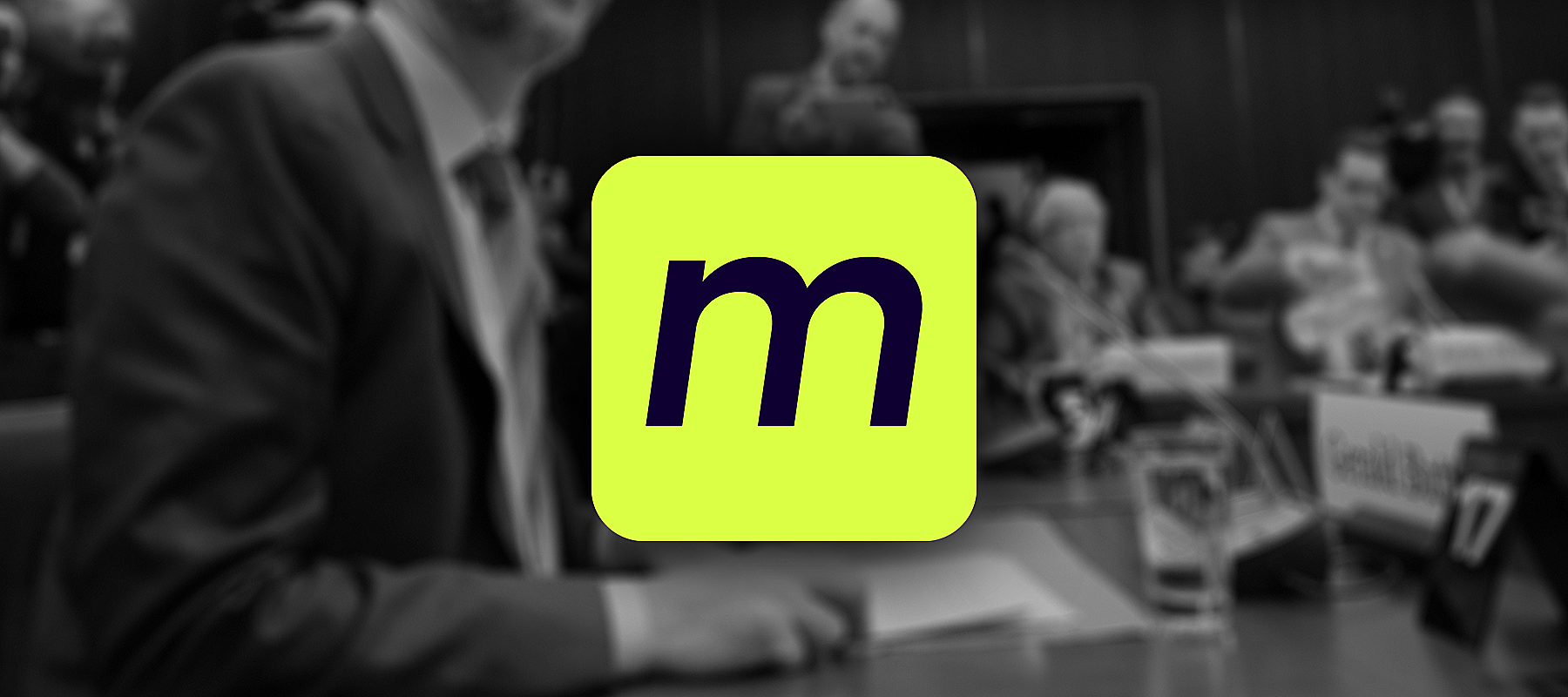-1692219662.jpg)
Comparing Wealthsimple vs. Questrade vs. Nest Wealth
TierneyMJ / Shutterstock
Our expert looks at the pros and cons of three of Canada’s leading robo-advisors and compares Wealthsimple vs. Questrade vs. Nest Wealth to see which one is the best fit for investors.
A do-it-yourself approach works just fine for many investors, but for those who don’t have the time, temperament, or inclination to manage their own portfolio of stocks, ETFs, or mutual funds, a robo-advisor is a great alternative. This article will look at three of Canada’s leading robo-advisors and compare Wealthsimple vs. Questrade vs. Nest Wealth to see what the best fit is for investors.
You might be surprised to find Questrade listed here, as the company is more widely known as one of the best online discount brokerages in Canada. However, Questrade recently launched its own robo-advisor platform called Questwealth. Meanwhile, Wealthsimple and Nest Wealth have been among Canada’s leading robo-advisors since launching in Canada in 2014.
Each of the three robo-advisors gives investors the ability to automate their investments with a low-cost, broadly diversified portfolio of ETFs – offering a completely hands-off experience so investors can focus on other aspects of their lives without sifting through financial statements and worrying about rebalancing. New customers receive up to $10,000 managed free for a year.
Comparing Wealthsimple vs. Questrade vs. Nest Wealth
| Robo-Advisor | Wealthsimple | Questwealth Portfolios | Nest Wealth |
|---|---|---|---|
| Best for | VIP perks | Low fees | Tiered pricing that benefits large portfolios |
| Min. investment | None | $1,000 | None |
| Fees | $0 to $100k= 0.50% $100k+= 0.40% | $1k to $99,999k= 0.25% $100k+=0.20% | $0 to $75k= $20/month $75k to $150k= $40/month $150k+ = $80/month |
| Rating | 4.8/5 | 4.4/5 | 4.5/5 |
About Wealthsimple
Wealthsimple is one of the best robo-advisors in the world, with assets under management of more than $5 billion dollars (as of August 2019) and more than 175,000 clients (August 2019).
Wealthsimple is known for its extraordinarily fast and easy 5-minute sign-up process, as they’re one of the only institutions in Canada that allow for same-day funding. After filling out a questionnaire, clients are assigned a portfolio based on their risk tolerance, comprised of between eight and 10 ETFs, with each ETF representing a unique asset class. Wealthsimple works with four of the largest ETF providers in the world. It gets Canadian and International stock exposure from iShares, U.S. stock exposure from Vanguard, fixed income from BMO, and dividend and real estate exposure from Purpose funds.
Compared to other robo-advisors, a stand-out feature is Wealthsimple’s premium benefits. While everyone can join Wealthsimple with as little as $1, clients with more than $100,000 qualify for Wealthsimple Black, which offers a lower management fee (0.40%) and other perks such as tax-efficient investing and goal-based financial planning with an experienced Portfolio Manager.
Clients with more than a total of $500,000 between their Wealthsimple investment savings accounts can get upgraded to Wealthsimple Generation. This gives you all the benefits of Wealthsimple Black (such as a 0.40% management fee), but also access to in-depth financial planning and an expert team that will even design a personalized financial report customized to your goals. But regardless of tier, every Wealthsimple client has unlimited access to human experts providing financial advice.
Start investing with Wealthsimple or for more information, read our in-depth Wealthsimple review.
Visit WealthsimpleAbout Questrade (Questwealth Portfolios)
Questrade launched its robo-advisor platform – Questwealth – in November 2018. It’s billed as a substantially improved version of Questrade Portfolio IQ, one of the first robo-advisors in Canada to provide an alternative to mutual fund investing. Canada’s fastest-growing online brokerage has spent 20 years in the Canadian market and has more than $9 billion in assets under management.
Unlike most robo-advisors, who mainly use ETFs to passively track global markets, Questwealth makes no apologies about its active management focus. All five of the portfolios offered (ranging from Conservative to Aggressive) are built and managed by experts who watch the market and adjust the portfolios when needed to reduce risk and maximize gains.
Questwealth builds its portfolios with ETFs from WisdomTree, SPDR, and iShares. The ETFs in the portfolios have a built-in cost charged by the companies managing them. The ETFs in the Questwealth have portfolio MERs ranging from 0.17% – 0.22%. Portfolios are dynamically rebalanced when market conditions change.
The stand-out feature for Questwealth is arguably their rock-bottom fees. Questwealth comes with a management fee of 0.25% for accounts with a balance of $1,000 to $99,999. Investors with more than $100,000 to invest can get those fees lowered to 0.20%. There are no account opening and closing fees, no trading fees, and no electronic fund transfer fees associated with Questwealth.
One downside: while you can open an account with as little as $1, unlike Wealthsimple or Nest Wealth, your money won’t be invested in a portfolio until your account balance reaches $1,000.
Start investing with Questwealth or for more information, read our in-depth Questwealth review.
Visit QuestwealthAbout Nest Wealth
Nest Wealth was founded by industry veteran Randy Cass and launched in 2014. Like Questwealth and Wealthsimple, opening a Nest Wealth account is completely online, secure, and encrypted – taking no more than 5 to 10 minutes. Each client gets a customized portfolio based on his or her risk profile, goals, and financial situation.
Nest Wealth uses broad-based ETFs from providers iShares and Vanguard. The average MER of its portfolios is around 0.13%. Investors do pay trading commissions of $9.99 per trade, but these fees are capped at $100 per year. Portfolios are monitored daily and automatically rebalanced if they drift beyond certain thresholds.
What’s unique about Nest Wealth is that they offer a unique subscription pricing model that starts at as little as $20 per month and caps at $80 per month (plus an average MER of 0.13%). This fee structure is great for clients with larger deposits; however, it can eat into smaller accounts. So just do the math before signing up.
While the onboarding and forms process is all automated, a Nest Wealth representative speaks with every client to discuss portfolio options. In addition, Nest Wealth offers advice on which accounts to open, investing time horizons, goals and risk tolerance by phone, email, or in-person visit. Unlike Questwealth, there is no minimum to open an account.
How are they the same?
There are many features shared by the three robo-advisors. Here are some similarities to consider:
How are they different?
Let’s look at how Wealthsimple, Questwealth, and Nest Wealth differ:
Fees comparison table
Below is a breakdown of the fees for each robo-advisor:
| Robo-advisor | Annual fees | MER | Other fees |
|---|---|---|---|
| Wealthsimple | 0.40 – 0.50%/year | Average 0.20% MER | None |
| Questwealth | 0.20 – 0.25%/year | Average 0.19% MER | None |
| Nest Wealth | $20 - $80/month | Average 0.13% MER | Clients pay $9.99 per trade, capped at $100/year. |
The comparison table below will give you an idea of how much it costs to invest at different portfolio sizes, such as at $50,000, $150,000, and $250,000.
| Portfolio size | $50,000 | $150,000 | $250,000 |
|---|---|---|---|
| Wealthsimple | Fee: 0.50% Average MER: 0.20% Annual Cost: $350 | Fee: 0.40% Average MER: 0.20% Annual Cost: $900 | Fee: 0.40% Average MER: 0.20% Annual Cost: $1500 |
| Questwealth | Fee: 0.25% Average MER: 0.19% Annual Cost: $220 | Fee: 0.20% Average MER: 0.19% Annual Cost: $585 | Fee: 0.20% Average MER: 0.19% Annual Cost: $975 |
| Nest Wealth | Fee: $340* Average MER: 0.13% Annual Cost: $405 | Fee: $580* Average MER: 0.13% Annual Cost $775 | Fee: $1060* Average MER: 0.13% Annual Cost: $1385 |
*Includes $100 per year in trading commissions.
Winner: Questwealth – you can’t beat their rock-bottom fee structure.
Unique features
Features unique to Wealthsimple
Offers Wealthsimple Black and Wealthsimple Generation for clients with more than $100,000 and $500,000 respectively. WS Black includes a lower management fee of 0.40%, as well as premium benefits like financial planning and tax loss harvesting. WS Generation features all that WS Black has to offer, plus in-depth financial planning, individualized portfolios, and 50% off Medcan health plan. Halal portfolios are available in addition to SRI portfolios. Wealthsimple covers any transfer fees associated with account transfers greater than $5,000.
Features unique to Questwealth
4 out of 5 of Questwealth’s actively managed portfolios have over 10 years of historical performance. Includes tax-loss harvesting in cash accounts, along with automatic dividend reinvesting. When switching to Questwealth, your transfer fees of up to $150 per account will be rebated.
Features unique to Nest Wealth
Assigns a dedicated portfolio manager to each client and has a conversation with each new client prior to opening an account to assist in portfolio customization and goal setting.
Winner: Wealthsimple – a more robust offering of services, depending on account size.
Minimum Investment
- Wealthsimple: For Wealthsimple Basic, no minimum deposit amount is required to get started. For Wealthsimple Black, you need a minimum investment of $100,000. Qualifying for Wealthsimple Generation requires $500,000 across all your Wealthsimple accounts.
- Questwealth: Minimum investment of $1000.
- Nest Wealth: No minimum investment required.
Winner: Wealthsimple – No minimums. Open an account in minutes from your computer or mobile device.
Tax-efficient investing
Both Wealthsimple and Questwealth offer a technique called tax-loss harvesting to lower capital gains tax in taxable accounts. Tax-loss harvesting is available to all Questwealth clients, but the feature is only offered to Wealthsimple Black clients who invest in a non-registered, or taxable account.
With Questwealth, the use of tax-loss harvesting is at the discretion of the portfolio manager or sub-advisor. They may replace your security with another or have some assets in cash for a period of 30 days. Your portfolio may not be fully invested during this period.
At Wealthsimple, the process is automated, with an algorithm screening accounts every day for tax-loss harvesting. It looks for a specific decrease before it decides to sell. For many ETFs, the threshold is seven percent. The feature is not turned on automatically, but clients can turn it on and off in the “settings” tab of the dashboard when you sign in to your account. Wealthsimple sends an email to let you know if a trade has been triggered. You’ll also see it on your dashboard, and at the end-of-year tax form where you can see both capital gains and losses.
Nest Wealth doesn’t provide automatic tax-loss harvesting on accounts.
Winner: Wealthsimple – Flexible and fully automated for clients who want to take advantage of tax-efficient investing in their non-registered accounts.
Financial planning
Wealthsimple Black clients can book a financial planning session with an advisor to review their financial goals and investments. Wealthsimple Generation ($500k+) clients have access to a personalized financial report customized to their goals; including retirement income strategies, wealth preservation, net worth and cash flow analysis, financial projections, and action steps to take. But regardless of tier, every Wealthsimple client has unlimited access to human experts providing financial advice.
While both Questwealth and Nest Wealth have a team of portfolio managers looking after your investments, they don’t offer personalized financial planning for their individual clients.
Winner: Wealthsimple
Standout features
Wealthsimple appeals to millennials, but its three-tiered service is well-positioned for an older, wealthier demographic. As millennials move up the wealth ladder, they can have their broader financial planning needs addressed, and many will love the access to unique features.
Questwealth is the lowest-cost option for entry-level investors and is widely known for its smart television ads blasting high-fee mutual funds. Questwealth’s “core and explore” active investment approach, combined with low fees, gives clients a chance (albeit slim) at beating the market
Nest Wealth’s unique selling proposition is its low fee, transparent, monthly subscription pricing. The capped monthly fee means as a client’s portfolio grows, their overall fees in percentage terms actually decrease.
Customer service
Wealthsimple’s Client Success team can be reached by phone or by filling out a request form online. Hours of operation are between 8:00 am and 8:00 pm (EST) Monday through Thursday, or between 8:00 am and 5:30 pm on Fridays.
Questwealth offers client support by phone, through virtual chat or email. The “Chat with Us” feature allows clients to instant chat with a Questwealth representative (Monday to Friday from 8:00 am to 8:00 pm EST).
At Nest Wealth clients can initiate a live chat discussion online, send a note by email, leave a voice mail message, or schedule a call.
Winner: Questwealth – Received the 2019 DALBAR Seal for Service Excellence award.
Security
Wealthsimple uses state-of-the-art security to protect your data. A 256-bit SSL certificate encrypts all information transmitted between your browser and its web servers. They use it to keep your account information safe, including passwords and personal information. Wealthsimple employs state-of-the-art backup and firewall technology to ensure that your information is always available. The system updates back-ups throughout the day, every day.
Questwealth offers a multi-layered approach to safeguard privacy and ensure that clients’ personal information is secure. They appointed a privacy officer, who is responsible for overall compliance with privacy legislation.
Nest Wealth uses bank-level security measures to ensure your data is collected and stored safely. They encrypt all communication between your browser and their servers, store all of your data on secure servers, and continuously test processes and procedures to ensure your data is secure and safe.
Winner: Wealthsimple, Questwealth and Nest Wealth all pass the test when it comes to security.
Who are they best for?
All three robo-advisors are suitable for most investors, but they each offer something unique that might appeal to different types of investors.
Wealthsimple is best suited for millennials. That’s the demographic they target, and their low fee structure is ideal for investors who are just starting out. With Wealthsimple Black, investors with more than $100,000 in their portfolio can enjoy VIP perks such as lower management fees and a financial planning session with one of Wealthsimple’s expert advisors.
Questwealth is best for investors seeking the lowest fees. The company leans on years of experience in the discount brokerage side to offer an actively managed robo-advisor service for those investors who are looking for an edge over the index.
While we tend to steer readers towards globally diversified, low-cost index funds and eschew active management, Questwealth gets its right by offering the lowest management fees at 0.25%, along with a proven performance record with its active portfolios.
Nest Wealth’s unique subscription model makes its platform ideal for investors with large accounts. Specifically, once your portfolio has crossed the $250,000 threshold, Nest Wealth’s fees are comparable to even the lowest-cost do-it-yourself investing strategies.
Which robo-advisor is best?
If I had to declare one robo-advisor the winner, I’d go with Wealthsimple. In fact, that’s where my wife’s RRSP is held. Wealthsimple is arguably the largest and most popular robo-advisor in Canada for a reason. It’s easy to open an account, easy to transfer existing accounts to Wealthsimple, and its low-cost structure is ideal for most investors.
Questwealth has the experience, customer service, and the lowest cost. However, actively managed portfolios can be a turn-off for investors who have embraced passively managed index investing. If you’re looking for the lowest of the low fees, learn more about Questwealth.
Finally, one big caveat to my Wealthsimple recommendation: investors with large accounts should absolutely consider Nest Wealth for its capped monthly fee structure.
The breadth of these robo-advisor services is proof that online and automated investing are not just for millennials. Most investors can benefit from a low-cost, hands-off, and automated approach to investing. Depending on your age and stage, comfort with technology, and fee tolerance, any of the three excellent robo-advisors could work for you. We recommend you check out our updated best robo-advisors in Canada guide to see even more possibilities.
Disclaimer
The content provided on Money.ca is information to help users become financially literate. It is neither tax nor legal advice, is not intended to be relied upon as a forecast, research or investment advice, and is not a recommendation, offer or solicitation to buy or sell any securities or to adopt any investment strategy. Tax, investment and all other decisions should be made, as appropriate, only with guidance from a qualified professional. We make no representation or warranty of any kind, either express or implied, with respect to the data provided, the timeliness thereof, the results to be obtained by the use thereof or any other matter.





